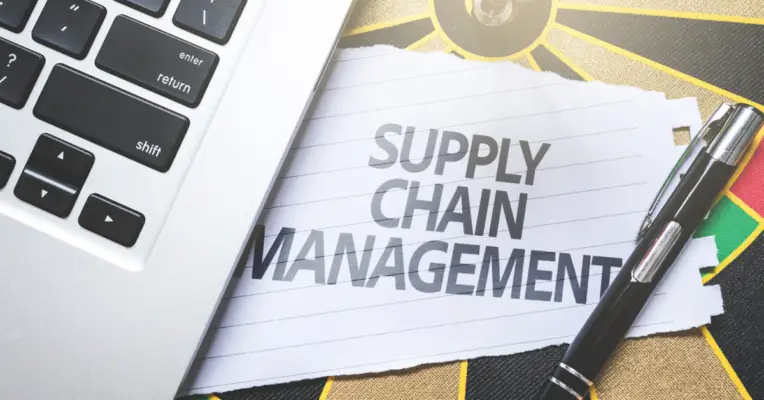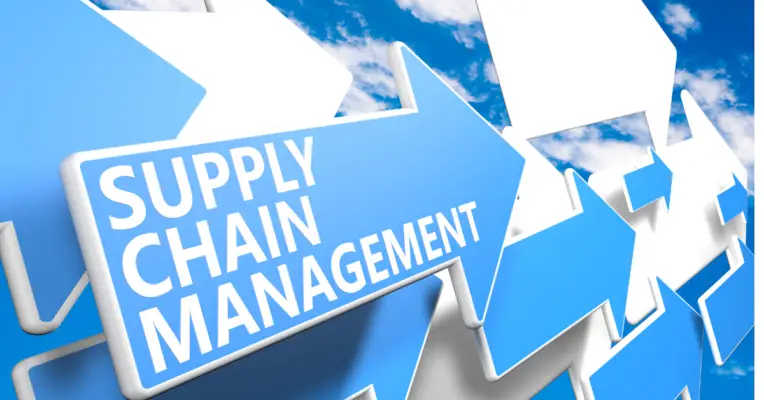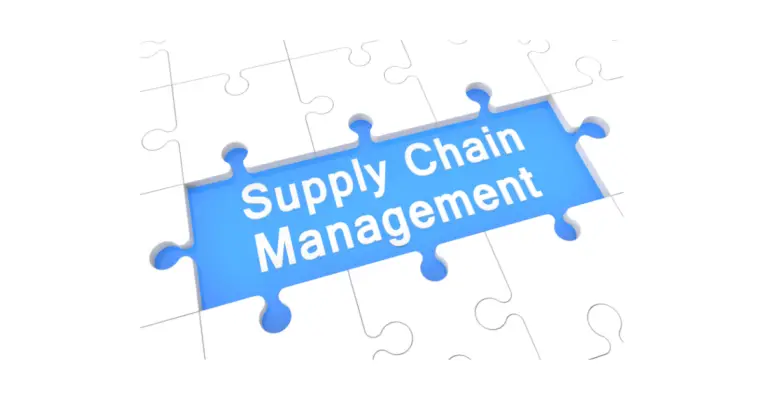A supply chain risk management plan is a critical tool for businesses that rely on external suppliers. The first step in creating a supply chain risk management plan is to perform a risk assessment. This assessment should identify the potential risks associated with each stage of the supply chain, from supplier to customer. Once the risks have been identified, businesses can develop strategies to mitigate them. These strategies may include diversifying suppliers, increasing communication and collaboration with suppliers, and developing contingency plans for disruptions.
Any business that relies on a supply chain to function is vulnerable to disruptions. Here are some steps to get started:
- Conduct a supply chain risk assessment. This will help you identify potential risks and their likelihood of occurring.
- Develop risk mitigation strategies. These can include things like diversifying your supplier base, increasing inventory levels, and establishing alternative sources of supply.
- Create a communication plan. In the event of a disruption, you’ll need to be able to communicate with your suppliers, customers, and employees quickly and effectively.
- Test your plan regularly. Make sure your plan is up-to-date and that all stakeholders are aware of their roles and responsibilities. Conducting regular drills will help ensure that everyone knows what to do in the event of a disruption.
Regulatory risk assessment, or SRM, is a process to assess and mitigate a company’s supply chain risk in its supply chains. A global supply chain risk management strategy is advisable to improve efficiency and customer satisfaction.
Supply chain management is the process of transforming raw material the organization utilizes into a finished product or services offered by that organization. It includes planning and managing the procurement, conversion, and logistic operations.
Do you know what could happen if your company’s supply chain was disrupted? A risk management plan can help you prepare for possible disruptions and minimize the effects on your business. In this blog post, we’ll discuss the basics of supply chain risk management and provide tips for creating a plan that works for your company. Stay tuned!
supply chain risk management policy
As the world becomes increasingly interconnected, businesses must be aware of the risks associated with their supply chains. A disruption in the supply chain can have a ripple effect that impacts the ability of a business to meet customer demand. Through identifying and addressing risks early on, businesses can minimize the impact of disruptions and keep their operations running smoothly.
There are a number of factors to consider when developing a supply chain risk management policy. First, businesses need to identify which parts of their supply chain are most vulnerable to disruptions. They then need to develop contingency plans for how to deal with disruptions when they occur. Additionally, businesses should establish communication protocols for dealing with suppliers and customers in the event of a disruption.
What is Supplier Risk Management?
Supply Chain Risk Management is the process by which a firm determines the risk of the entire supply chain to ensure it can meet its goals. There is inevitably a risk to both supply chains and internal and external components so understanding both is important.
Supplier risk management is an umbrella within which suppliers are managed. Risk management is often confused with supply relationships management, but is in fact just a subset of what SRM.
Supplier Risk Management has become an increasingly common practice among companies and government agencies and often involves checking supplier value, screening, and evaluating their subsequent risk factors. The final result is a detailed supplier risk analysis, identifying potential supplier risk factors impacting business operations and identifying ways for addressing these risks.
The need to have operational flexibility is a constant battle for retailers and manufacturers. Disruptions in the supply chain often throw everything into chaos, forcing them on an urgent quest just to get back up again with little time or resources available before they’re forced out of business. Only 21% of businesses said their network was highly resilient but half expected this situation will only worsen over 10 years – despite increased investment from both sides.

Examples of Supply chain risks
Supply chain risk management examples includes internal and external risks
Internal supply chain risks
Internal supply chain risks are those that originate from within the company, and they can be just as damaging as external risks. One of the most common internal supply chain risks is disruptions to the production process.
This can be caused by a number of factors, including machinery breakdowns, power outages, and raw material shortages. Another common risk is poor communication between different departments within the company.
Although internal suppliers risks can generally be controlled better than external risks, they can remain unavoidable if necessary.The supply chain risk factors can affect your supply chain to prevent future problems from developing. Essential risk management steps are crucial for conducting risk assessment.
External supply chain risks
Supply chain management is a process that involves planning, executing, and monitoring the movement of goods and resources from one point to another. An effective supply chain is crucial for businesses, as it determines the efficiency and effectiveness with which goods and services are delivered to customers.
However, managing a supply chain can be complex and difficult, particularly due to the number of external factors that can impact its performance. One of the most significant risks faced by supply chains is the risk of disruptions. Disruptions can occur for a variety of reasons, including natural disasters, political instability, and transportation accidents.
When disruptions occur, they can cause significant delays and disruptions to the flow of goods, impacting businesses and customers alike. As a result, it is important for businesses to have a plan in place to deal with such disruptions.

Supply Chain Risk Management Strategy
Supply Chain Risk Management Strategy is the proactive identification of risks across the supply chain with the goal of minimizing the impact of disruptions. The goal of a Supply Chain Risk Management Strategy is to maintain supply chain resilience against potential disruptions.
By definition, supply chain risk management (SCRM) is “the process of identifying, assessing, and managing the risks associated with supply chain disruptions.” SCRM is a relatively new field that has emerged in response to the globalization of supply chains and the increased complexity and interdependencies of these supply chains.
A key challenge in SCRM is that risks can come from any number of sources along the length and breadth of the supply chain. As such, an effective SCRM strategy must be comprehensive in its scope and take into account the entire supply chain.
In addition, an effective SCRM strategy must be flexible and adaptable to changes in the supply chain as well as the ever-changing landscape of risk. The goal is to provide a framework for an effective SCRM strategy that can be adopted by organizations across industries.
The framework consists of three key components: (1) identifying and assessing risks across the supply chain; (2) developing and implementing mitigation strategies; and (3) monitoring and reporting on performance.
Use PPRR Risk Management Template
The PPRR Risk Management Template is a tool that can be used to help businesses identify and assess risks associated with supply chain disruptions. The template helps businesses to identify potential risks and assess the likelihood and severity of those risks. It also provides guidance on how to develop plans to mitigate or avoid those risks.
The template can be used to help businesses improve their supply chain resilience by identifying potential risks and implementing strategies to reduce the impact of supply chain disruption. By using the PPRR Risk Management Template, businesses can improve their supply chain visibility and better prepare for supply chain disruptions.

Centralize data
Centralizing data is a key way to improve supply chain visibility and resilience. Having a centralized repository for all data related to the supply chain, companies can more easily track shipments, identify potential disruptions, and develop plans to mitigate those disruptions.
Furthermore, centralizing data makes it easier for companies to share information with their supply chain partners, promoting collaboration and improving overall efficiency. In today’s dynamic business environment, supply chain visibility and resilience are essential for success.
Often the risk management tools you employ may cause a lot of problems. Investing in an integrated solution that stores data in a central warehouse makes capturing data easier.
Systematically monitor risks
Is it possible to automate the sourcing of products or services? This gives a sense of security and valuable insights into ways of simplifying supply chain activities.
Steps to Manage Supply Chain Risks
Although you’ve probably faced many obstacles to managing supplier & supply chain risk the basic concept is the same.
Identify the problem
First, you need to identify the elements of risk within your supply chain. You must account for the entire tier one, but it would be ideal to go further into tier 2 or 3 because there is the most disruption.
Setting an individual risk scorecard is important to determine each element in an important risk. Use standard numerical scales. You can then develop a system to monitor your supply chains in real-time to monitor risk. A proactive monitoring strategy is critical.
Assessed
Risk data is flowing into your database now but the data can’t be used for action. You have to analyze the data and evaluate how the different risk areas will affect you. It is important to focus on the importance and the impact the most on reducing the impact of a supply chain hazard.
To do so the business has to determine its importance to its business. Let’s take some examples. This isn’t exhaustive, you should bring in more stakeholders to learn more about your company’s risk priorities.
Develop risk assessments in a matrix
A robust supplier network is a key to supply chain operations. By conducting regular risk assessments, organizations can identify risk events that could disrupt supplier relationships. By developing risk assessments in a matrix, organizations can prioritize suppliers based on their importance to the organization and the potential impact of a supply chain disruption.
supply chain risk management plan
A supply chain risk management plan should be developed to address various risks that could hamper business operations. The plan should take a holistic view of the organization’s supply chain and include all stakeholders. It should identify risks and assess their impact on the business. It should also develop mitigation strategies and establish communication channels. The plan should be reviewed regularly and updated as needed.
Supply chain risk management is a critical function for any organization that relies on external suppliers. A well-developed plan can help to mitigate risks and protect the organization’s reputation and bottom line.
Mitigating
Identifying the risk is important but without minimizing risks it is simply you sit on the margins a little too late to be prepared to deal with disruption. An effective supply chain risk mitigation strategy is divided between two components and is the first that needs to go alongside risk identification and assessment.
As the data gets into your system it becomes clear what steps you should take to avoid any disturbance. It could also mean you avoided exclusive sourcing activities, broadened your Supplier Portfolio by geography, or encouraged or refined your own processes.
Conclusion
At its core, a risk-aware culture means that an organization is proactive about identifying and mitigating potential risks. By taking a proactive stance, organizations can stay one step ahead of the competition and create a predictively and prescriptively analytics-driven operation.
Supplier risks, in particular, can be difficult to manage but by having a risk-aware culture in place, it becomes much easier to identify potential issues and take steps to mitigate them. In today’s business environment, a risk-aware culture is essential for success and should be considered a critical part of any organization’s operations.
A supply chain risk management plan is an essential part of a company’s business continuity and disaster recovery planning.Implementing a supply chain risk management plan may seem like a daunting task but with the sole purpose of mitigating supply chain risks its possible. For more on this click on cybersecurity risks archives.

Chris Ekai is a Risk Management expert with over 10 years of experience in the field. He has a Master’s(MSc) degree in Risk Management from University of Portsmouth and is a CPA and Finance professional. He currently works as a Content Manager at Risk Publishing, writing about Enterprise Risk Management, Business Continuity Management and Project Management.

